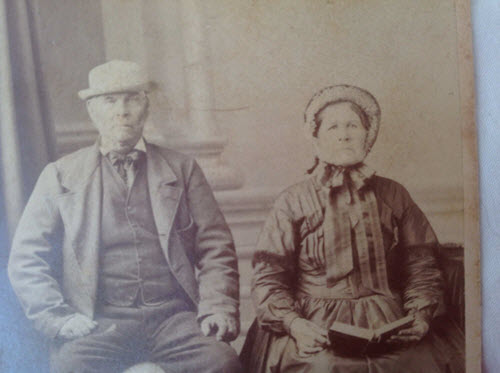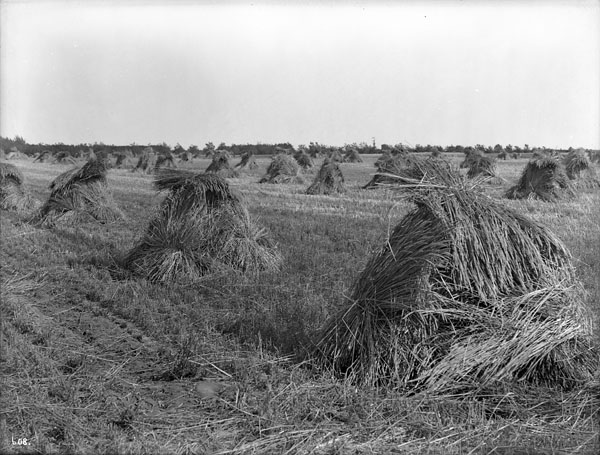Hello and welcome to Sourdough and stories beyond
I am your host Mykola Nevrev, sourdough expert, cookbook author and owner of The Midnight bakery, soon to be Bloom bakery in Bratislava, Slovakia
In each episode of this podcast, I am going to share a story from the wonderful, and sometimes strange world of sourdough baking and beyond.
Today’s story is about the mystery behind world-famous Manitoba flour and its hidden, but important ancestor.
If you know what Italian Panettone is or if you’ve ever tried to bake one by yourself, you’ve probably come across very strong wheat flour called Manitoba flour. Originating from the Canadian province of Manitoba, the name of this flour is now used worldwide as a synonym for high gluten flour, which is suitable for long fermentation and enriched doughs. that’s why it is so popular among bakers who bake challenging products like Panettone.
But then, why is the name of a Canadian province that originates from the language of local Indian tribes now used as the name of a wheat variety and what’s the story behind it?
In my honest opinion, the story I am going to share is worthy of a feature film.
It all started in 1842 when Canadian farmer David Fife received a handful of wheat grains from his friend in Glasgow, Scotland. The wheat was obtained from a cargo ship direct from Gdansk, Poland and originated somewhere in Central or Eastern Europe. The grains were seeded in the late spring and as it turned out, this yet unnamed wheat was a fall variety that never ripened, except for three stalks, each bearing only a single grain. So if you’ve ever wondered if a single grain can make a deep impact on history, now you know that it most definitely can. This singular grain started the entire history of the wheat variety called Red Fife as the colour of the mature grains was reddish.

Red Fife soon became one the most popular wheat varieties in both Canada and the United States. The yields were high, and the wheat had a good winter hardiness, early maturation, and it was resistant to fungal infections. what is also important, was that it was popular among bakers due to its excellent baking qualities.
However, the origin of Red Fife was still a subject of debate. The answer to this question came 63 years later.
In 1905, William Saunders, Canadian agriculturist who, along with his sons, played a big role in the development of Canadian wheat varieties, received samples of a Ukrainian wheat called Halychanka, which was named after Halychina, a historical part of Western Ukraine). Grains were sown in an experimental field along Red Fife and were closely monitored at all stages of growth and milling after the harvest was collected. As you can imagine, both varieties were identical and the mystery was solved more than half a century after the first grain of Halychanka changed the history of Canadian agriculture:
This meant that Red Fife had Ukrainian origins.
Interestingly, the very first record of this grain variety can be found in old Galician chronicles from the 12th century.
A year before this discovery, another major event in Canadian wheat growing history took place. Charles Saunders, the son of William Saunders, discovered a new variety on the fields of the Central Experimental Farm in Ottawa. This variety, named Marquis, was a cross between Red Fife (also known as Halychanka) and the Indian wheat variety Hard Red Calcutta.
Fun fact: during the winter of 1904, Charles Saunders didn’t have a proper laboratory for testing the results of his experiments, no mill or oven, so he chewed the grain to assess the potential quality of future flour and bread. As you can imagine, this simple method worked.
17 years later, Marquis dominated wheat fields in North America. Compared to its ancestors, this variety has shorter straw and does not lie flat, and it also ripens a bit faster than Red Fife which is important since Canadas Prairie provinces have a shorter vegetation period. In 1918 Marquis was sown on more than twenty million acres both in the United States and Canada, replacing some other spring and winter wheat varieties.
Let’s now return to Manitoba. As one of Canada’s top wheat-growing regions, it provided the name for a flour grade in 1912, when the Canadian grain act was created to regulate wheat trade and to set the standards for grading wheat. According to the act, to be graded as Number One Manitoba Hard, the wheat must be sound and very clean, the bushel must weigh no less than 60 pounds and must consist of at least 75% Hard Red Fife or Marquis.
Red Fife, or Halychanka made a major contribution not only to Canada’s title as the Granary of the Empire, but also to the expansion of numerous towns and the industrial development of entire regions.
High-yielding Canadian wheat can be considered one of the reasons for the Allies’ victory in World War I, and it was also crucial during World War II. As the British High Commissioner to Canada stated, ‘Without the help of Canadian farmers, Britain would have lost the war in less than two years.'”
Manitoba wheat was introduced to Italy shortly after the war as a part of the Marshall plan and since then, its name has become synonymous with strong wheat flour with high gluten content. Today, when baking panettone, Italian bakers use flour named with a word from the Algonquian Native American language that refers to a Ukrainian wheat variety that originated in the 12th century.
After being replaced by Marquis and other hybrids, Halychanka reappeared in 1998 as a part of The Heritage Wheat Project. By 2007, 450 tonnes of Halychanka were harvested.
Now, for a little plot twist.
My research on Manitoba, Red Fife and Halychanka was intended to share information about Ukraine’s grain heritage by posting this story on the Instagram account of Bake for Ukraine, an NGO I am proud to have cofounded. The post was scheduled for August, 24th, Ukrainian Independence Day.
The same week Bake for Ukraine received support from the amazing project Bakers for Bakers, where almost one hundred bakeries mostly from US and Canada baked Palyanytsya, Darnitsky and other iconic Ukrainian breads and pastries to raise donations for the reconstruction of 2 mobile bakery vehicles. Listen to the second episode of this podcast to learn more about them. The baking marathon was a huge success and on behalf of the Bake for Ukraine team I would like to say a big thank you to all the participants.
Dave Bauer owner of Farm and Sparrow mill in North Carolina and founder of Bakers for Bakers initiative commented on the Manitoba post to my surprise, he works with Red Fife in his mill and he also has baking experience with this wheat. So here is Dave with a short take on baking with Red Fife.
Thank you, Dave!
Well, I think it’s safe to say, the mystery of Manitoba is successfully solved and I hope you’ll remember this story the next time you eat panettone.
This episode was recorded in the beautiful down-town of Bratislava Slovakia.
You can find the text version on my website mykolanevrev.com
Many thanks to Mandy Jones and Pilota Creative for producing this podcast.
I’m looking forward to sharing another story in two weeks. Until then, please don’t sew just one grain in attempt to create world changing wheat variety.
Sources
http://www.careerchem.com/NAMED/Patents/SSymko-wheat.pdf
